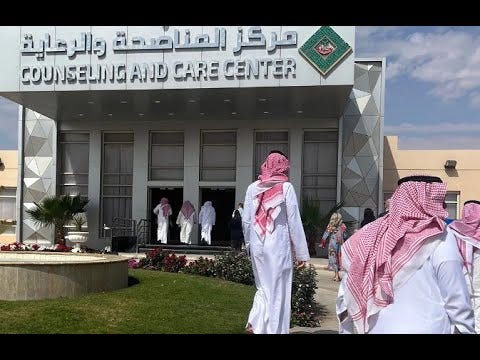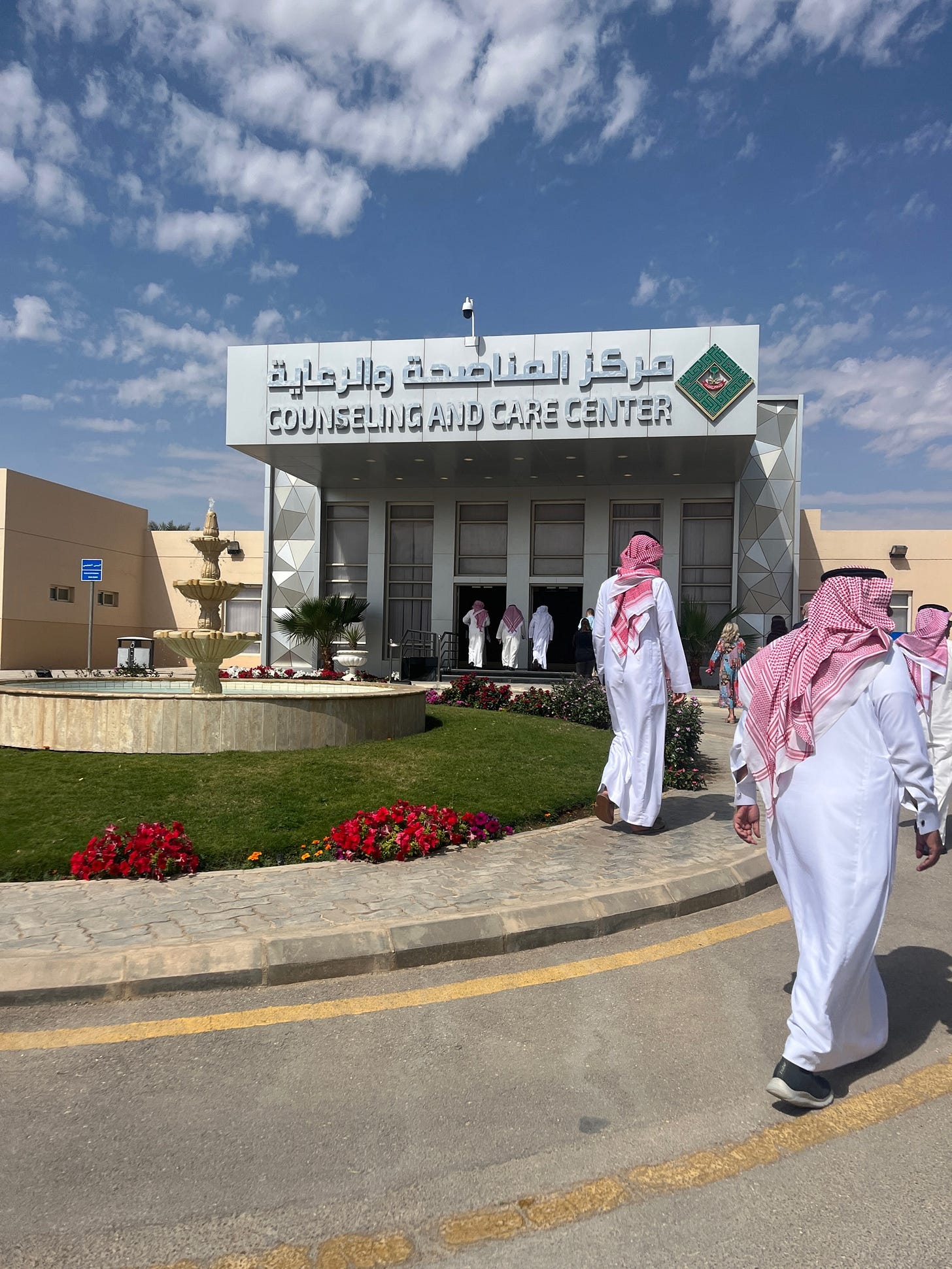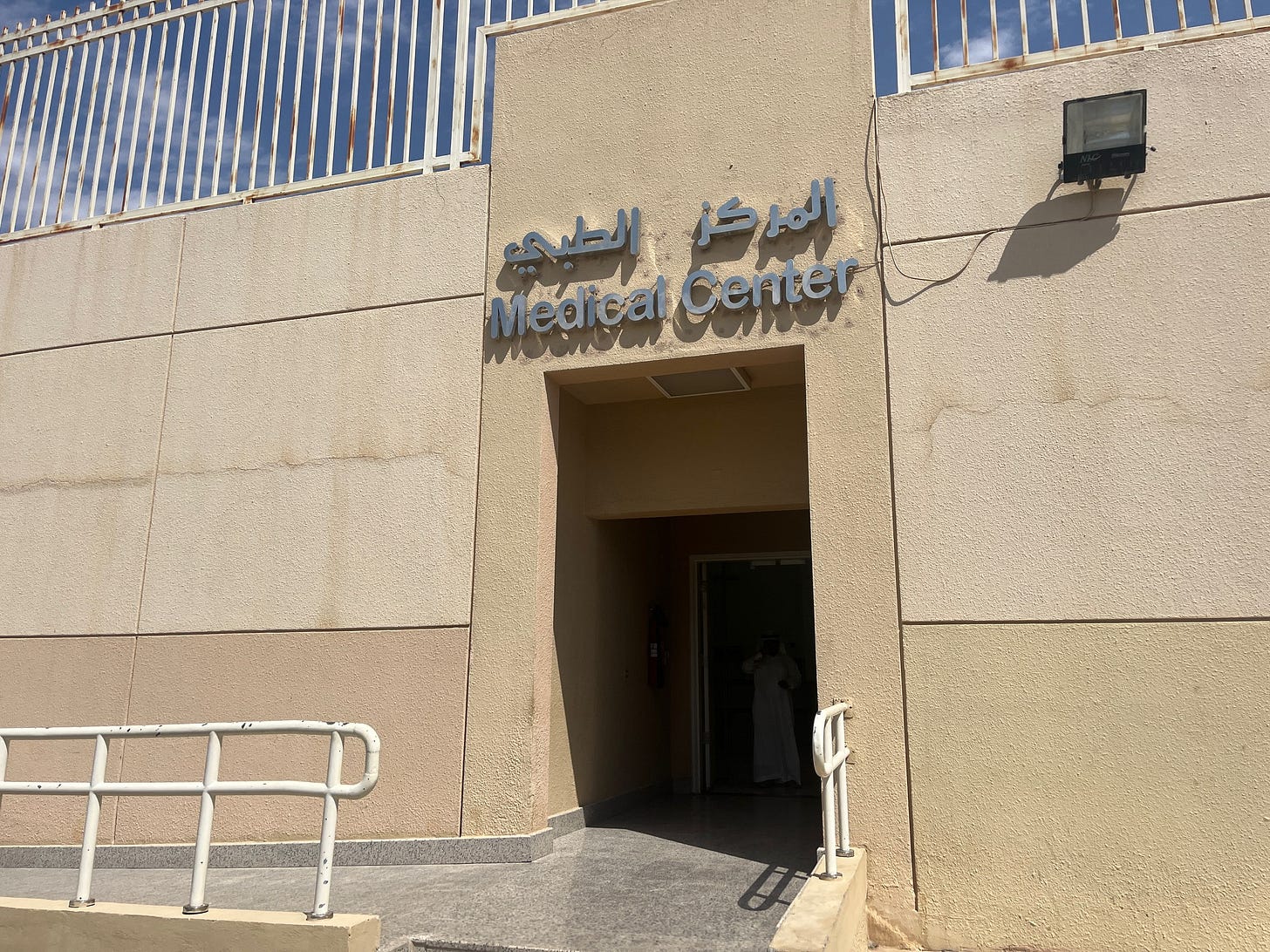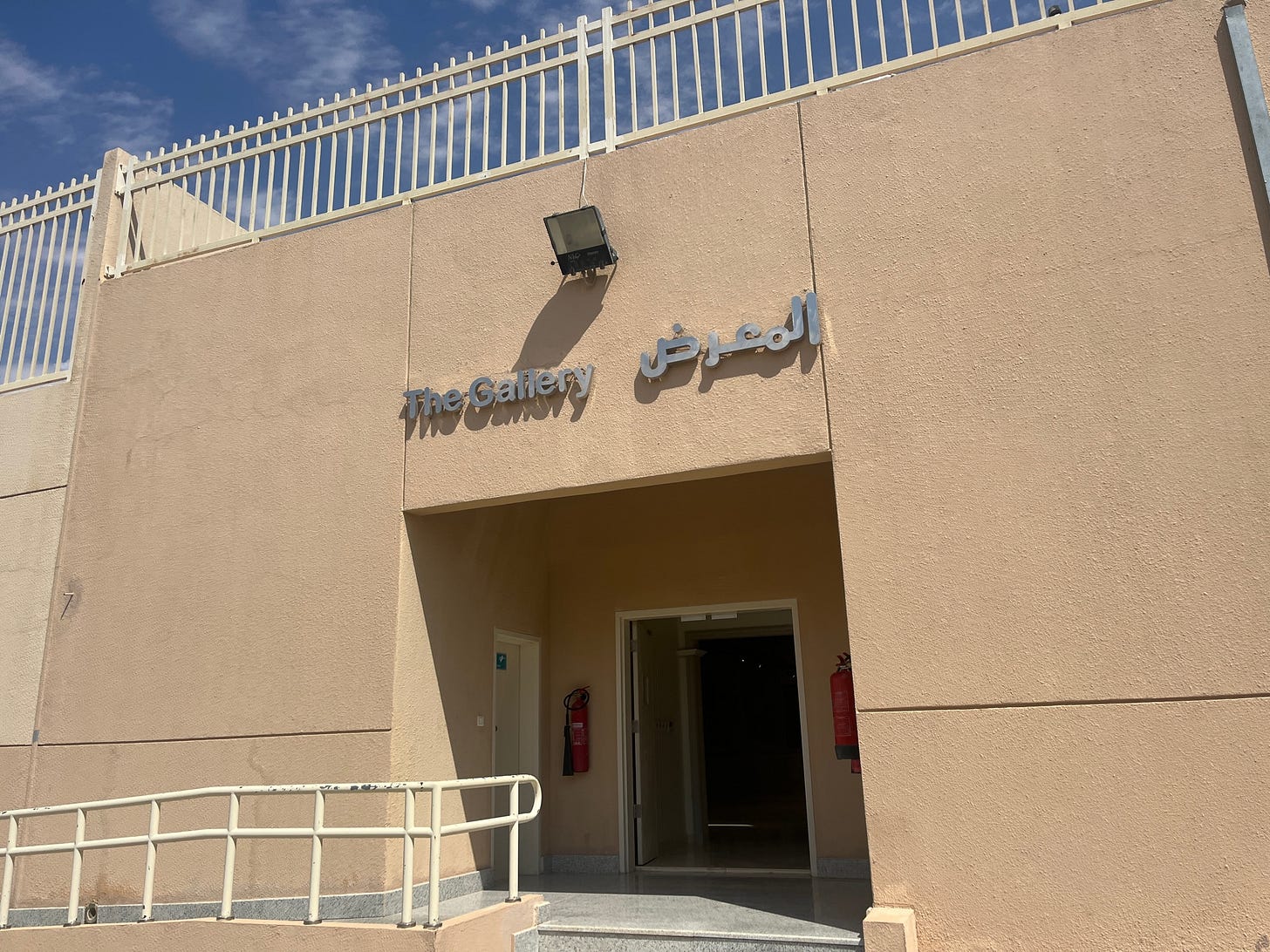RIYADH, Saudi Arabia – On the edges of the Kingdom of Saudi Arabia’s bustling capital rests a sprawling campus once a popular desert resort. Fresh dates and the scent of locally harvested coffee fill a bright banquet hall, an expansive gym looks out upon the carefully manicured grounds, motivating images of top-notch athletes adorn the large indoor swimming pool, the gaming room is filled with everything from chess to pool to ping pong, and the tiered theater room is a welcome reprieve from the blistering winter sunshine.
Only this is no ordinary retreat.
I am standing in the Mohammed bin Nayef Center for Counseling and Care. More bluntly, it serves as the first post-September 11 rehabilitation facility, or halfway house, for terrorists and extremists, including those who once fled deep into far-flung battlefields to fight for al-Qaeda and the Islamic State. On a global scale, it is undoubtedly one-of-a-kind.
“We don’t work with prisoners, with work with a person. We don’t call them inmates; we call them beneficiaries. We prepare him to return to the community, and we don’t just leave them alone at that point,” a representative tells me softly as we walk through the quiet halls, the white-robed “beneficiaries” with distinctive ankle bracelets milling in the distance. “We continue to work with him even after he has re-entered society. We deal with him as an individual. We work with his family and relatives to ensure the best outcome.”
In a way, it’s Saudi Arabia’s lauded attempt to kill out the killer instincts and squash the national security menace with compassion and kindness
Despite the government’s religious traditionalism, the Kingdom has long been a target of militant Islamic outfits who view the leadership as treasonous, especially for its close ties to Washington on counterterrorism measures. Further, the golden conquest of hardline extremists remains to capture the nation deemed the birthplace of Islam and home to the world’s two holiest mosques in Mecca and Medina. While Riyadh took some action against terrorists immediately after the September 11 attacks, it wasn’t until two massive attacks hit home – in 2003 and 2004, respectively – that those authorities prioritized comprehensive countermeasures. But rather than relying solely on judicial means to shore up their national stability, Saudi authorities recognized the need for “deprogramming” and integration strategies post-prison almost two decades ago, with the facility first opening its doors in 2004.
Transforming the mindset of radicals so they can no longer pose a threat to the state, along with returning them to “true Islam,” is the overarching goal. Thus, the Care Center offers three main components. The counseling phase begins while beneficiaries are still behind bars serving their sentences. Next, the rehabilitation chapter takes place at the facility with a multi-prong approach, including behavior programs, art therapy, sports, cultural and religious activities, vocational training and even video gaming. Finally, this phase is followed by intensive aftercare once the recipient returns to society.
In addition, participants are paid the equivalent of USD 267 per day while residing at the Center, an incentive tailored to further diminish animosity toward the ruling leadership. The facility’s senior staff repeatedly stress that nuances matter in determining one’s victory in returning to real life.
“Many have spent some years in prison, so they need help with paperwork – renewing their bank account or getting an ID, and we help them with that,” the representative continues. “We also help some continue their education in public schools or universities and help them find a job.”
There is even a matchmaking service for those without immediate families, where staff “arrange” marriages for participants without a wife, a tactic to solidly ground them in society. The representative notes that it is a three-month program but “can be extended on the recommendation of specialists.”
To meet the release requirements and graduate, one must pass an exam to showcase their rejection of extremist ideology and ascertain a green light from psychological and security subcommittees. However, if the beneficiary shows unsatisfactory signs of concrete progress once their months at the Center are complete, they are repatriated to the judiciary and prison systems.
Moreover, the Center is also the temporary home for Guantanamo Bay detainees immediately after their release from the Cuba-based detention facility. Those recipients endure a specialized eighteen-month program to address the “psychological trauma” of exposure to enhanced interrogation tactics and to take extra precautions to ensure the individual no longer poses a security hazard.
Since 2002, 138 Saudi nationals have passed through the shadowy GTMO gates – the second most of any country, just behind Afghanistan – with three deaths in custody in what the DOD ruled suicides. The remainder have subsequently rotated through the Care Center. Yemeni detainees, the third most of all nations swept into the controversial U.S. penitentiary, are also repatriated to the Saudi facility due to the ongoing war in their neighboring homeland.
Now to the burning question: does all this work?
According to Saudi authorities, the Care Center has treated more than four thousand men convicted of terror-related crimes, with an 89 percent success rate. Mind you, these statistics are from the government and not independently evaluated. Nonetheless, how does one define success? After ten years of aftercare and close monitoring, authorities determine a graduate a “success” if they have not committed a crime.
However, among that eleven percent relapse rate are those from Guantanamo Bay. In 2009, Saudi law enforcement listed eleven former detainees and Care Center graduates among the country’s most wanted terrorist suspects.
While the Saudi top-brass is quick to show off the Center as a source of national pride, it isn’t without some condemnation from other governments who view the “soft” approach to terrorism as a waste of money and a security threat. Iraq, for example, does not hesitate to hand out a death sentence – or life behind bars if lucky – for any individual who swore allegiance to the brutal Islamic State. And in the United States, terrorism is typically met with a lengthy sentence and an iron fist by the judicial system. Despite some generally left-leaning activist efforts to incorporate more structured anti-radical programming and a less prison-centric approach – which many contend only further fuels extremism and the formation of terror devotees – the use of taxpayer funds on such initiatives remains politically unpopular and particularly egregious to the right.
Indeed, the issue of rehabilitation has long been contentious in U.S. circles, and in my years diving into the issue, there has been no shortage of pushback.
“Terrorist rehab is a joke and a total waste of U.S. taxpayer dollars,” Col. James Williamson, who founded the group OPSEC that advocates for U.S. Special Forces, tells me. “All cases are different as are each of the individuals but as a rule, there is no such thing as rehabilitating a committed jihadist. They should be dealt with by military courts and, if not able to execute under the military courts martial, they should be locked up forever.”
However, others contend that such programs are pivotal for public safety. Chief Kevin Lowry of the U.S. Probation and Pretrial Services to the District of Minnesota, which has implemented reintegration trial programs for convicted terrorists over the years with seemingly mixed results. Minnesota, home to the largest Somali population in North America, in recent years has dealt with more than thirty young Somali men charged with having links to ISIS and Al-Shabab, a terror group in Somalia.
“Each individual is different, we tailor it to that person and to what enticed them. It is very important to take this seriously, we can’t allow extremism to grow,” Lowry insisted.
And foreign governments – including the United States – have praised the unique Saudi program, and officials here and there have hinted at incorporating at least some elements into terrorist programs stateside. So while there is a good chance that the green hideaway dotted with golf carts and chef-inspired foods probably won’t be on the taxpayer docket anytime soon, it makes sense to treat the matter with a little more nuance than solely lumping it into the overpopulated prison system without carefully curated integration as the sentence draws to an end.
“It is part of our social responsibility for our society,” the representative adds sternly. “Yet based on the success rates, many countries can benefit from our programs or part of the programs, and they have already started doing it.”
CLICK TO READ IN DALLAS MORNING NEWS
PLEASE CONSIDER A PAID SUBSCRIPTION TO THIS SUBSTACK TO HELP KEEP INDEPENDENT, AGENDA-FREE WRITING AND JOURNALISM ALIVE. THANK YOU SO MUCH FOR YOUR SUPPORT.
For speaking queries please contact meta@metaspeakers.org
Follow me on Instagram and Twitter for more updates
Please join us in Los Angeles for a private book launch…
Order your copy of “Afghanistan: The End of the US Footprint and the Rise of the Taliban Rule” due out this fall.
For those interested in learning more about the aftermath of war, please pick up a copy of my book “Only Cry for the Living: Memos from Inside the ISIS Battlefield.”
If you want to support small businesses:










